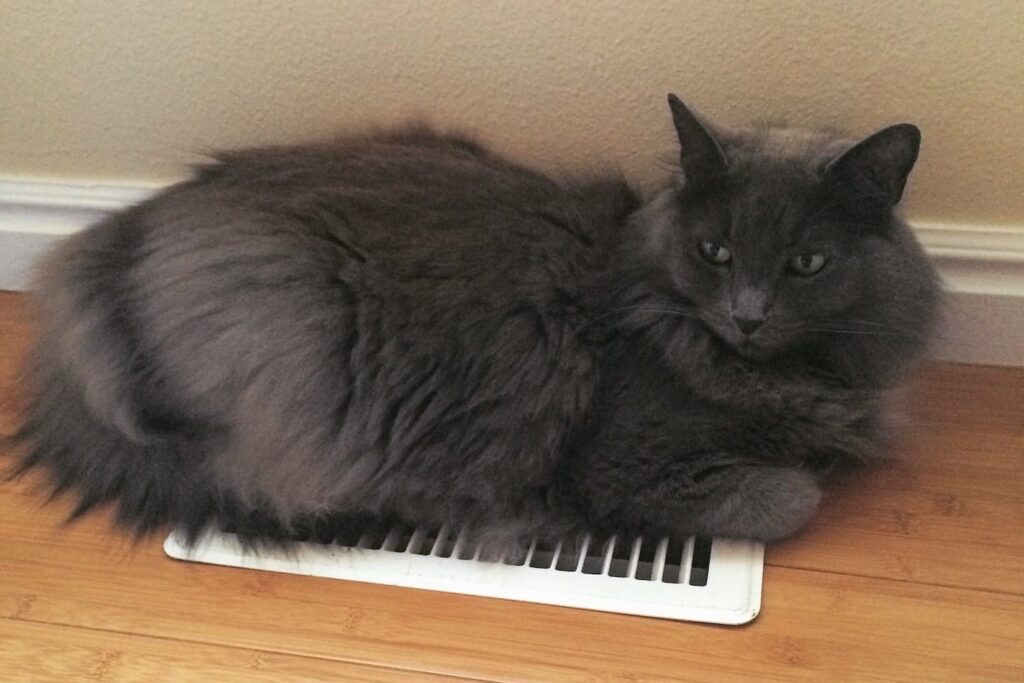How to Set a Thermostat or Air Conditioner to the Best Temperature for Your Pets


The battle over the air conditioner and thermostat is a fraught one in many workplaces and households. Maybe you have that one coworker who just seems to need an arctic blast or desert-like warmth running through the room. And ya know what? Sometimes are pets are the same. But unlike that one person in your life, pets can’t fight over the thermostat with you. Some pets are much more comfortable in a room that isn’t quite to your liking. Here’s your guide to keeping a room comfortable for your pets!
How Pets Regulate Their Body Temperature
Cats and dogs regulate their body temperature differently than we do. And if you understand this concept, it’ll be a little easier to figure out what temperature environment will make your pet happiest and safest.
First, dogs have sweat glands on their feet and pant to lower their body temperature when they’re hot. Cats are different. Their feet are smaller so they find other ways to to regulate their body temperature, such as looking for shade or sunlight. They also might bathe a lot to cool down. Both dogs and cats might burrow or look for shelter if they’re cold. And different pets have different tolerances for hot or cold. Obviously a Chihuahua might get chilly faster than a Malamute! Hormone imbalances, diabetes and other health conditions can also cause extra sensitivity.
How to Read Your Pet’s Behavior
Look to your pet’s behavioral cues to tell whether or not they are comfortable temperature-wise. If your dog or cat is drawn to your air conditioner or heating vents, this is probably a sign that they are too warm or too hot. If your cat is seeking out shade or napping on a cold floor, they might be too warm. If your dog or cat is crawling under blankets, shivering or sprawling in the sunlight, they might be chilly.
A Note on Coat Length
Okay, so obviously the length of your pets fur or hair can play a role in how warm or cold they need the temperature to be. However, this may not be as big of a role as you think. Most fur acts as insulation. Not only does it help keep cats and dogs warm in the winter, but it also helps keep them cool in the summer. In fact, some furry pets shouldn’t be shaved in the summer. Some dogs like Huskies actually benefit from their fur in warm weather. Not sure on the best haircut for your pet? Ask your veterinarian.
How to Know if Something Is Wrong
Here are the common signs of hypothermia or heat stroke (i.e., when to call your veterinarian ASAP!):
- Uncontrollable shivering
- Uncontrollable panting in dogs or ANY panting in cats
- Dilated pupils
- Fatigue
- Collapsing
- Irregular heartbeat
- Lack of coordination or dizziness
- Vomiting
- Blue or pale gums



